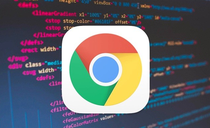
**Innovative Uses of Google Chrome for Students**
In today's digital age, Google Chrome has emerged as one of the most popular web browsers, particularly among students. Its versatility and a plethora of features make it an indispensable tool for learning and productivity. Here, we explore some innovative ways students can leverage Google Chrome to enhance their educational experience.
**1. Organizing Research with Bookmarks and Folders**
One of the most effective uses of Google Chrome for students is its bookmarking feature. Students can save essential websites, articles, and resources by simply clicking on the star icon in the address bar. To stay organized, they can create folders within the bookmarks bar. For instance, a student working on a research paper can create folders for different topics, organizing relevant links that can be easily accessed later. This method not only saves time but also ensures that students have all their resources in one convenient location.
**2. Collaboration through Google Docs and Extensions**
Google Chrome seamlessly integrates with Google Workspace, allowing students to collaborate in real time using Google Docs, Sheets, and Slides. With features like comments, suggestions, and chat, group projects can be executed smoothly regardless of each member's location. Additionally, students can enhance their Google Docs experience by using a variety of Chrome extensions like Grammarly for grammar checks or EasyBib for citation generation. These tools help students to improve their writing quality and maintain academic integrity.
**3. Learning with Educational Extensions**
Google Chrome’s vast extension library can be a treasure trove for students looking to enhance their learning experience. Extensions like Todoist help manage tasks and deadlines, while Evernote Web Clipper allows users to save articles, images, and PDFs directly from the browser for later reference. Moreover, tools such as MindMeister allow students to create mind maps directly in their browser, helping them to visualize complex information and generate ideas for assignments or projects.
**4. Enhancing Study Habits with Focused Browsing**
For students easily distracted by social media and other websites, Google Chrome offers a variety of extensions to promote focused study habits. Tools like StayFocusd enable students to limit the amount of time spent on distracting websites, while Forest gamifies the process of staying focused by encouraging students to "grow" virtual trees as they remain undistracted. By implementing these tools, students can cultivate better study routines and improve their academic performance.
**5. Accessibility Features for Inclusive Learning**
Chrome is equipped with numerous accessibility features that benefit students with diverse learning needs. The built-in screen reader, ChromeVox, assists visually impaired students by reading text aloud. Additionally, students can use the high contrast mode to make text more legible. For students who require additional support, extensions like Read&Write offer tools for text-to-speech, translation, and summarization, making it easier to digest complex materials.
**6. Leveraging Google Keep for Notes and Ideas**
Another transformative tool within the Google ecosystem is Google Keep, an intuitive note-taking app that integrates effortlessly with Chrome. Students can jot down ideas, create checklists, and set reminders that sync across devices. This is especially useful for organizing thoughts during lectures or brainstorming sessions. By using Keep's labeling and color-coding features, students can visually categorize their notes, making retrieval more efficient when studying for exams or working on projects.
**7. Virtual Learning and Classroom Management**
As remote learning continues to be a significant aspect of education, Google Chrome plays a crucial role in facilitating virtual classrooms. Students can attend classes via Google Meet or Zoom directly from the browser, and utilize classroom management tools like Google Classroom to submit assignments, participate in discussions, and access educational materials. This integration streamlines the learning process, making it efficient and user-friendly.
**8. Enhancing Digital Literacy Skills**
In a world where digital literacy is essential, Google Chrome offers students practical experience with technology. From navigating the Chrome settings to understanding data privacy and online ethics, students can develop crucial skills that will benefit them both academically and professionally. Through consistent use of various online tools and resources, students become not only consumers of information but also creators.
In conclusion, Google Chrome is more than just a web browser; it is a powerful educational tool that can significantly enhance a student's learning experience. By taking advantage of its features and integrations, students can improve their organization, collaborate effectively, focus better, and develop essential skills for future success. Whether in a classroom or studying independently, the innovative applications of Google Chrome can tailor the educational journey to meet diverse student needs.










